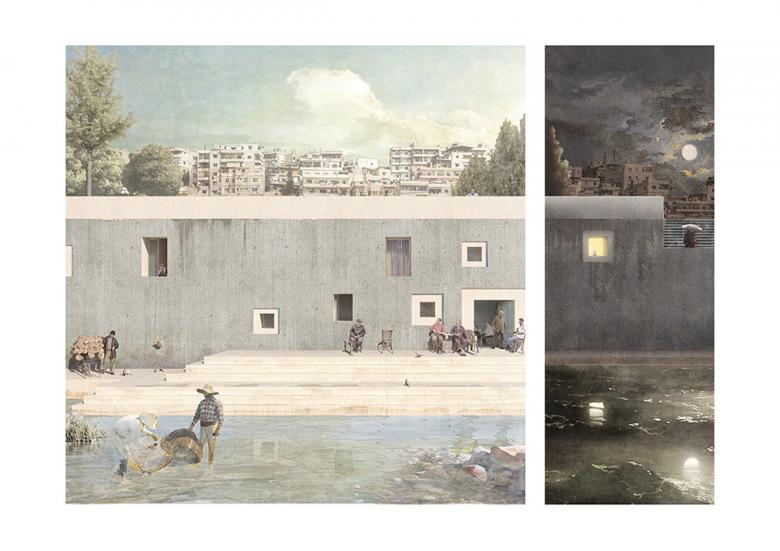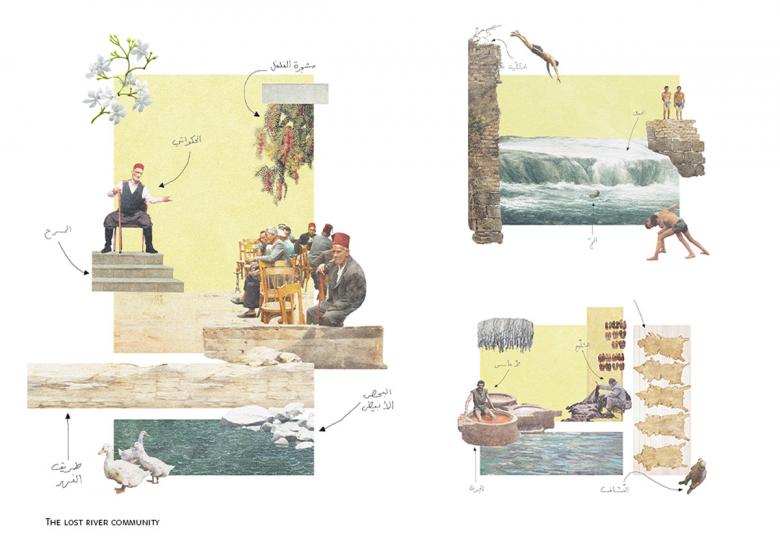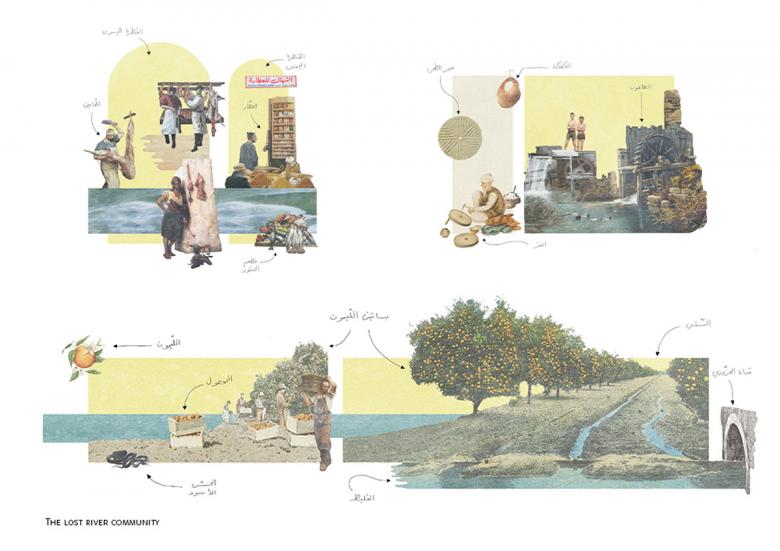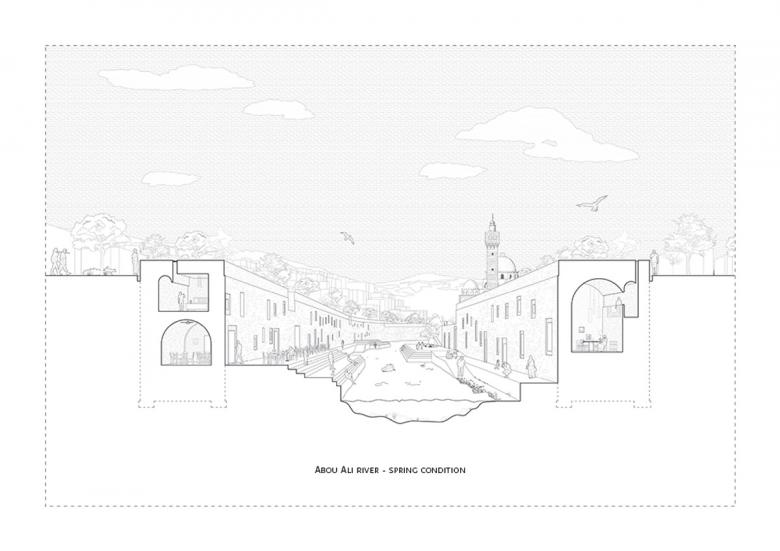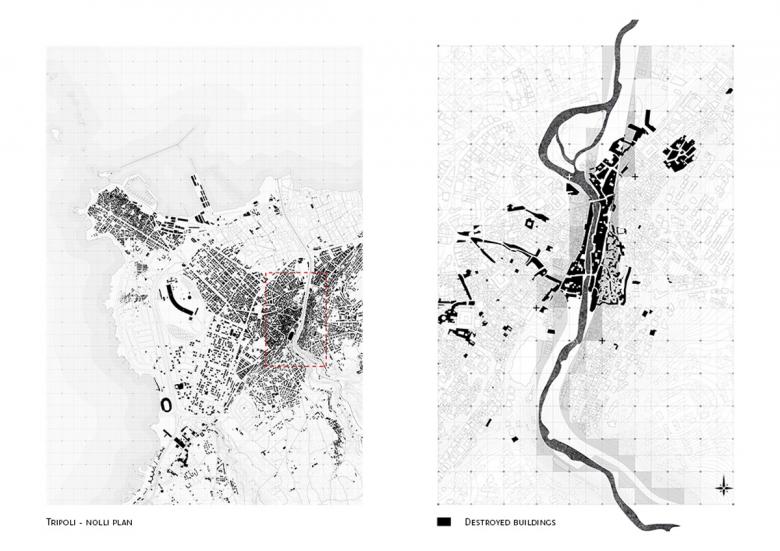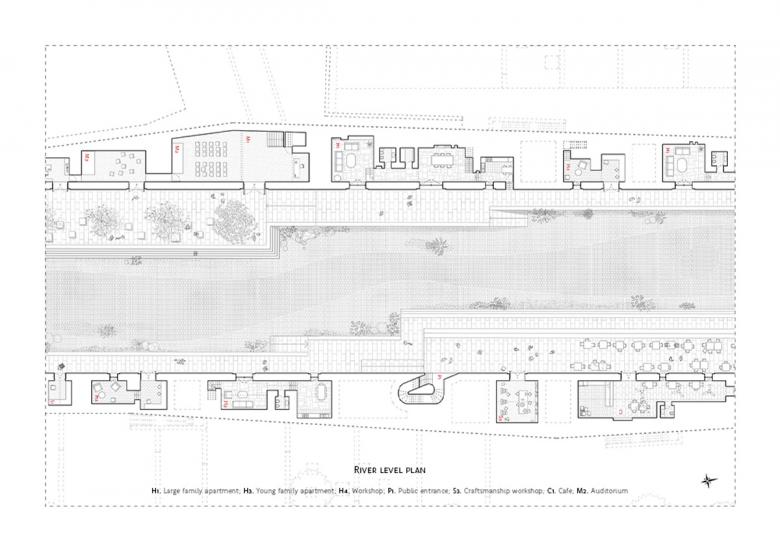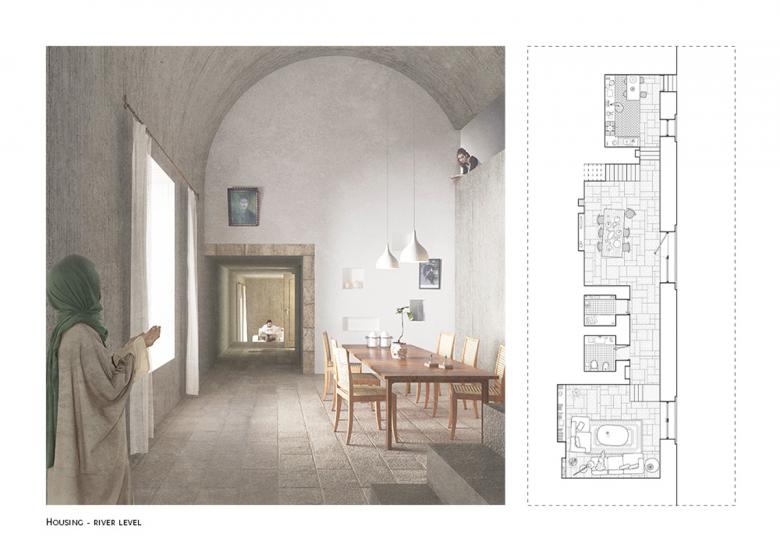Intangible Authenticity
Project Location
Tripoli, Lebanon
Topic
Users Community, Identity
Program
Mixed use - Cultural & Social Aggregation, Architecture, Heritage, Nature, Community
Critical Reflections on the [Lost] River Community in Tripoli
The project analyses the damage an urban intervention had on the active community of Tripoli, reconsiders the fragmented collective memory and proposes a design solution that re-uses and restructures the failed river bank intervention, to turn it into a vibrant communal space, allowing the populace, nature and the urban fabric to heal and regenerate.
In 1955, a flood devastated Tripoli leading the loss of lives and the destruction of homes. In response, the government channeled the Abu Ali river, gaping the city with concrete walls and a deep riverbank. The river then goes from being the catalyst of social cohesion to an element of a physical division, after being an active part of the urban fabric and an anchor point in shaping the community. At the center of recomposing the fragmented community is reconnecting people to the river from various perspectives and allowing Tripolitans to reforge the characteristics of the place, laying the foundations for a possible authentic redevelopment of the community.
In the analysis phase, we have delved several times on the meaning of "authenticity", and its role in the integration of a community within the urban environment. For us, the key driver of "authenticity" is the human, and the ability of people to forge the characteristics of a place, which in return reflects on the quality of experience. This means that authenticity is subjective and formed by each person's perception of it, affected by social signs, memory, and selfness. Responding to this subjective discourse is an objective intervention, connecting the river to the city. The proposal takes into consideration the existing elements: the boundary between the city and the river, the concrete wall, and the canalized riverbed. The threshold has been reinterpreted through the pedestrianization of the river front and the creation of a rhythm suggested by the urban fabric. The concrete retaining walls have been configured to bring the population closer to the river and recreate a community; the wall is therefore a pivotal element capable of recreating a connection between the historic city and the river level, hosting a variety of functions that are vital to the neighborhood. These comprehend residential spaces that are designed for a variety of users: large families, elderly people, and young families. The other face of the community is represented by a variety of local activities: small crafts workshops to revive lost traditions, small shops serving the local population and coffee shops that allow vibrant gatherings that were once characteristic of this area. Finally, the riverbed has been reshaped, allowing a direct contact with the water body; its spatial composition establishes a strategic relationship with the river that considers the seasonal fluctuations. In conclusion, the core of our design process is creating an architectural intervention that considers the past and present to design a functional setting for the future development of a community in direct contact with the water element, as we believe that this perceived authenticity is shaped by the people who were stripped from it.
